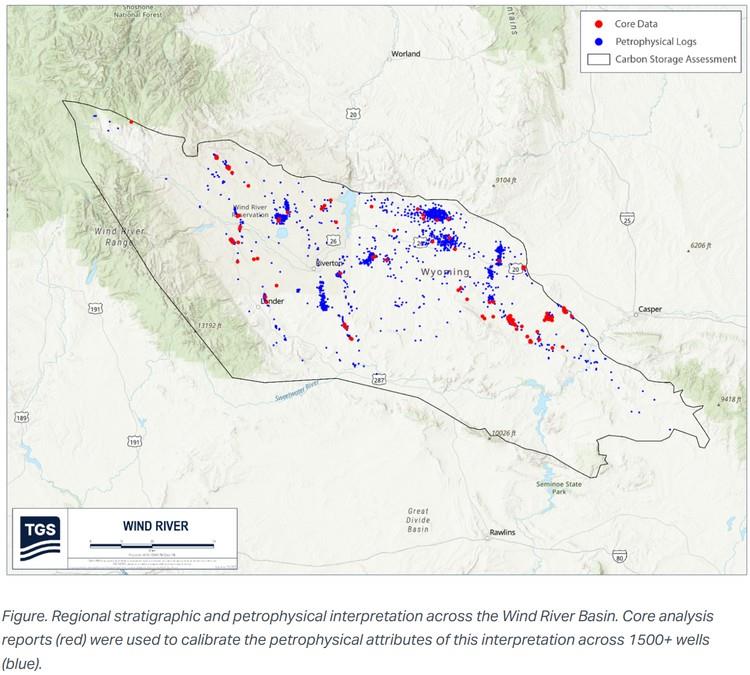
TGS, a global leader in energy data and intelligence, has announced the release of a comprehensive stratigraphic and petrophysical dataset for the Wind River Basin, further expanding its Rocky Mountain data portfolio.
Building on the successful releases of 2025, including the Greater Green River Assessment and the Uinta, Piceance, and Paradox basins, this new dataset delivers critical subsurface insights across 1,572 wells and includes 35 stratigraphic tops with over 9,700 formation picks spanning the basin's diverse geological framework. The release also includes detailed petrophysical interpretations and regional property maps, supporting both traditional and emerging energy workflows.
Designed for maximum utility and technical integrity, this dataset enables:
- Consistent regional stratigraphic interpretation across the basin's structural complexities and diverse depositional environments
- Petrophysical analysis of key reservoir characteristics, including porosity, permeability, and fluid saturation
- Basin-wide property mapping, facilitating prospect evaluation, reservoir modeling, and carbon storage screening
- Enhanced understanding of the Wind River's unique geological features and hydrocarbon systems
'Our Wind River Basin dataset addresses a key gap in Rocky Mountain subsurface intelligence,' said David Hajovsky, Executive Vice President of Multi-Client at TGS. 'With over 9,700 formation picks across 35 stratigraphic horizons, we're delivering the geological foundation our clients need to unlock value in this underexplored basin – from traditional drilling programs to next-generation carbon storage projects.'
With its comprehensive scope and technical depth, the Wind River Basin dataset supports a wide range of subsurface applications – from hydrocarbon exploration and development to carbon storage assessment and geological research. It's built to integrate seamlessly into existing workflows, offering a standardized foundation for geoscientists, engineers, and decision-makers focused on regional exploration and energy transition strategies.
By expanding its Rocky Mountain coverage to include the Wind River Basin, TGS continues to deliver on its mission to provide trusted, actionable subsurface intelligence that drives smarter energy development – both now and into the future.

For more information on the dataset and how TGS' data can enhance your exploration or carbon storage strategy, please contact us at WDPSales@tgs.com.
For more information on how our data can enhance your subsurface strategy in the Rockies region, visit https://www.tgs.com/well-data-products/geological-data.
Source: TGS











